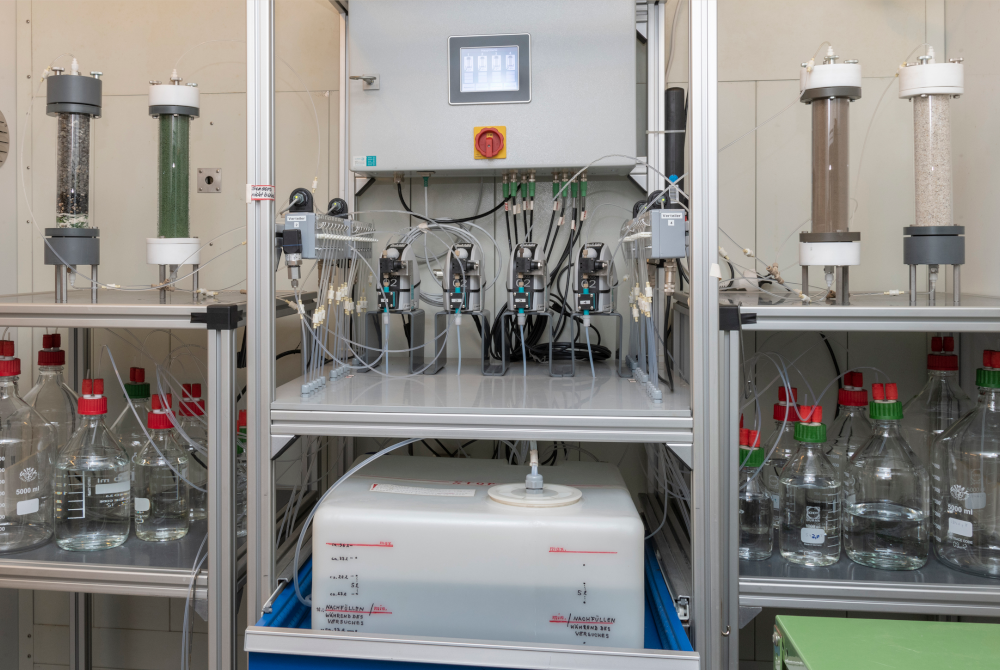
Automated column test device - simulation of leaching processes from different solids
Source: BAM
PFAS, short for per- and polyfluoroalkyl substances, are a group of synthetic chemicals known for their durability and resistance to heat, water, and oil. They are often referred to as "forever chemicals" because they do not degrade easily in the environment and can accumulate over time. PFAS are used in a variety of products, including non-stick cookware, waterproof clothing, firefighting foams, and food packaging.
Laboratory-scale leaching tests are a tool for assessing the mobility of environmental pollutants released from granular materials. This allows, for example, to determine the input of pollutants from soils into groundwater. The aim of this study was to evaluate the comparability of two common and standardised laboratory-scale test methods, shaking (“batch” test) and column percolation. Comparative leaching tests were performed with four contaminated soils whose concentration patterns of 10 selected PFAS differed due to the sources of contamination. The contamination of two soils was caused by firefighting foams, which to date contain a very high proportion of these pollutants. The other two soils were contaminated by application of polluted compost. The quantification of the PFAS species in the eluates was carried out using liquid chromatography-tandem mass spectrometry.
The differences between the replicates of the leaching experiments for the investigation of PFAS were smaller in the column percolation tests than in the batch tests, which is probably mainly due to the larger sample portion and thereby better representativeness of the sample analysed. It was observed that batch tests overestimate the release of short-chain PFAS, with the effect being greater for carboxylic acids than for sulfonic acids. Currently, the detection limits specified by the German DIN standard for the analysis of perfluorocarboxylic acids (PFCA) and perfluorosulfonic acids (PFSA) in soils are not sufficient to detect very low levels, while the detection of selected PFCA and PFSA in eluates is more sensitive to detection according to the available standards. This leads to limitations in the calculation of mass balances.
Comparing PFAS analysis in batch leaching and column leaching tests
Ute Kalbe, Christian Piechotta & Nicole Bandow
Environmental Science and Pollution Research, 2024


